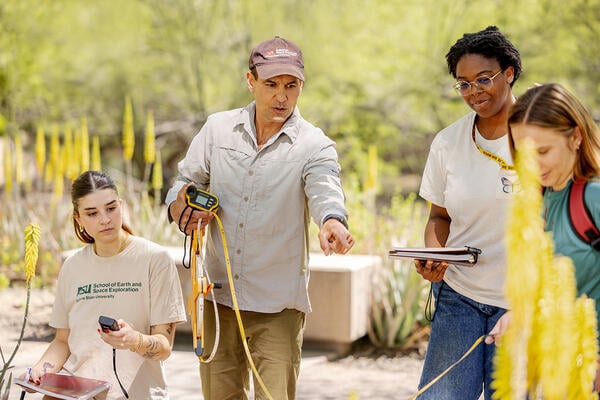- Professor Antony C. Moss is Pro Vice Chancellor Education and Student Experience at London South Bank University.
The recent announcement from Universities UK that it will be setting up a taskforce to look at efficiency and transformation across the higher education sector is very welcome, if not long overdue. As our sector faces existential challenges regarding financial sustainability, it is absolutely right that we look more critically at the way we organise ourselves and run our institutions. This means more than looking at shared professional service models, moving IT systems into the cloud, or diversifying income streams. The argument I want to develop here is that we desperately need a more diverse workforce to support a higher education sector which serves a far broader purpose for society than it did when our current workforce model was first established.
The Uneven Growth of the Higher Education Sector
It is a fascinating exercise to visualise the growth of the UK higher education sector over time. Robbins reported the total number of full-time UK students in 1960 was just short of 200,000. Fast forward to the latest data available via the Higher Education Statistics Agency, and in 2022/23, that number has grown to almost three million. While that 1960 figure does not include student numbers enrolled in the polytechnics of the day (which of course mostly became universities in 1992, stimulating a sudden burst of growth in student numbers), this remains an extraordinary expansion by any standard.
As a sector, we have weathered much criticism in recent years regarding the extent to which we are recruiting too many students. While this might be a tempting conclusion given the figures cited above, it is worth keeping in mind that the needs of our labour market have also changed dramatically since 1960. For example, in 2021/22, over 160,000 of the 2.25 million students in higher education that year were studying towards a nursing qualification. In other words, the nursing student population of 21/22 equates to more than three-quarters of the entire full-time UK university student population in 1960. We all benefit from advancements in modern medicine, but this requires us to invest in a workforce with an ever-increasing level of technical knowledge and skill. This same argument could be made for the workforce in many other sectors of our economy, and so we should continue to expect expansion and diversification of our education sector to support the types of jobs and skillsets required for the future.
While we might debate and reflect on the number of students entering higher education, it is less common to hear debates and discussions on the size of the workforce who are the backbone of our own sector. While I have been unable to locate accurate workforce data as far back as 1960, the Higher Education Statistics Agency have published data from 2005/6. At that time, UK higher education providers employed a total of 355,410 staff, of which 164,875 were in academic roles. Moving ahead to 2022/23, we now employ 480,845 staff, of whom 240,420 are in academic roles. In itself, this is a significant workforce expansion – a total increase in staffing of over a third, and a 50% increase in academic staff numbers over a 17-year period. Or in more human terms, that is a net increase of 75,545 full-time equivalent academic staff.
What is perhaps most remarkable is that this expansion of our workforce has been, at a national level, an organic process. We have no whole-sector workforce plan and no sector-wide discussion around the shape and size of the workforce we need in 5, 10, or 25 years’ time. In their 2021 review of HE sector workforce changes, Alison Wolf and Andrew Jenkins illustrated both the expansion and changing shape of the sector workforce but also demonstrated that this has been largely reactive and not driven by a clear set of principles or plans.
The reason this all matters in the context of discussions about financial sustainability is that the expansion of the higher education sector has been uneven in terms of the growth of our different areas of activity. As illustrated in Figure 1, over the past ten years, the overwhelming majority of our income growth has been linked to teaching.
Figure 1: Income of UK Higher Education Providers by income type and academic year (£ millions)
From a workforce perspective, with teaching income rising sharply against relatively stable income for research, it would be reasonable to assume that the additional 75,454 academic staff noted above would be almost entirely focused on teaching. However, the best available data we have on the proportion of time spent by academics on different activities – the Transparent Approach to Costing (TRAC) returns published by the Office for Students – shows that there has been almost no change in the proportion of academic staff time spent on research activity. For years where there are comparable TRAC data, we can see that in 18/19, research activity accounted for 35.3% of academic activity, while in 22/23 that figure was 34.1% (and from Figure 1, we can see that teaching-related income grew over this period by over £7bn, while research income only grew by £821m). If research income to the sector had been growing at the same rate as teaching income, these figures would not be a concern – but that is very clearly not the case.
One interpretation of these figures could simply be that this is how higher education has always operated. Tuition fees are, in part, spent on recruiting academic staff, and academics are typically recruited on contracts which include an expectation of them engaging in research and scholarly activities. Moreover, the argument goes, this is fundamental to the mission of universities, which is not solely to teach degree courses but also to generate new knowledge.
This argument is flawed, however, due to a decade of tuition fee freezes set alongside the massive growth in student numbers, which far outstrips growth in research-related income. Our workforce model cannot simply continue growing in a linear fashion while the demands and expectations placed on the workforce are changing as significantly as they have. To provide an analogy, if the government were to announce a massive boost in research funding for universities, and the sector were to respond to this by indicating that around a third of this money would actually be spent on teaching, I would expect eyebrows to be raised across the board. But this is precisely what we have been doing, over a long period of time, in relation to teaching-related income.
Developing a Workforce Model for the Future
As noted above, our sector does not have a workforce plan; we have essentially grown our workforce using traditional contract types and workload models. On the other hand, the NHS Long Term Workforce Plan is an example of taking a whole-sector approach to reflect on workforce needs for a large and complex sector. Importantly, the plan proposes a significant expansion of its workforce, which will depend heavily on the capacity and ability of our further and higher education sectors to deliver. This does not simply entail the expansion of current training routes for existing professions, but the diversification of the types of qualification we offer, and continued development of curricula to ensure the skills being taught reflect long-term workforce needs.
There are many examples of other sectors and, indeed, government departments developing workforce plans and strategies which similarly rely upon the capacity and expertise of further and higher education institutions to fulfil education and training needs. What is invariably missing from such plans is any meaningful reflection on the assumptions made about the capacity and structure of our tertiary education sector. Shortages in teachers can be addressed by funding more training, but are we confident that we have a large enough workforce of teacher-educators to meet this demand? Similarly for nurses, doctors and allied healthcare professionals and, indeed, for any other sector who may be assuming that the tertiary sector is ready and waiting to absorb a continued expansion of students to meet their own future workforce needs.
Moving beyond subject expertise and whether we can simply recruit a large enough workforce to teach, the higher education sector has also changed beyond recognition in terms of the range of qualifications we offer. The three-year undergraduate degree remains the most common study route, but higher education providers now also offer degree apprenticeships, higher technical qualifications, and a growing number of professional and technical qualifications which are quite different to traditional university study. These differences arise due to the type of students they attract, the content of the qualifications themselves, and also the very different regulatory frameworks which underpin their delivery and monitoring.
These changes place a very different set of needs and expectations on our workforce – both academic and professional services colleagues. Degree apprenticeship programmes require a different pedagogic approach to a traditional undergraduate degree, and come with a significant set of additional regulatory expectations. Very few academics will have ever encountered the Education and Skills Funding Agency prior to the growth of apprenticeships standards, and Ofsted was the regulator of everyone except us (outside of university education departments). These changes are not trivial, but they have happened rapidly, and without overt consideration of the way we need to support, develop and expand our own workforce.
While 1960s higher education was, in relative terms, a fairly monolithic sector, today’s higher education sector is extraordinarily diverse and delivers massive economic and societal benefits, which are incomparable to the past. Our sector has changed, and I would strongly argue it has changed for the better. However, in the current climate of deep financial challenge, we must also reflect critically on the way we develop and diversify our own workforce. This, in my view, means stepping outside the well-trodden path of introducing so-called ‘teaching only contracts’ for academics – essentially, academic contracts where the focus is on professional practice and pedagogic leadership, which still retain a career pathway through to the highest academic ranks. Rather, we need to invest in developing a new segment of our workforce, of expert educators who are specialised in areas such as skills development and technical education. If done well, this has the potential to deliver a range of benefits:
- Stabilising the financial precarity of our sector. When teaching income is rising faster than research income, we need to ensure we are not disproportionately growing the cross-subsidy of research from teaching income (while recognising that some degree of cross-subsidy is part of the higher education funding model).
- Improving the quality of education. By developing more specialised roles within the sector, we can deliver better experiences and outcomes for students, and ensure that they are better able to succeed beyond their time in higher education.
- Improving working conditions for all staff. Through the creation of more specialised roles and career pathways which are better aligned to the needs of the sector as a whole.
- Supporting our national ambitions for Growth and Skills. As Skills England looks at our future workforce needs, it is critical that we have a stable and high-performing education sector to educate and train the workforce. We cannot continue to take for granted that our education sector can organically bend itself to meet changing industrial and economic needs, without a strategy to support the reforms which will be required.
Universities UK and its taskforce on efficiency and transformation should, I suggest, prioritise a review of our underpinning workforce model to ensure that we are collectively fit for the future. But this work cannot happen in isolation. Our sector will be able to respond more effectively to changing demands if we work together with Skills England and the Department for Education to better understand the role that higher education can play in delivering on national ambitions for growth and skills development.











